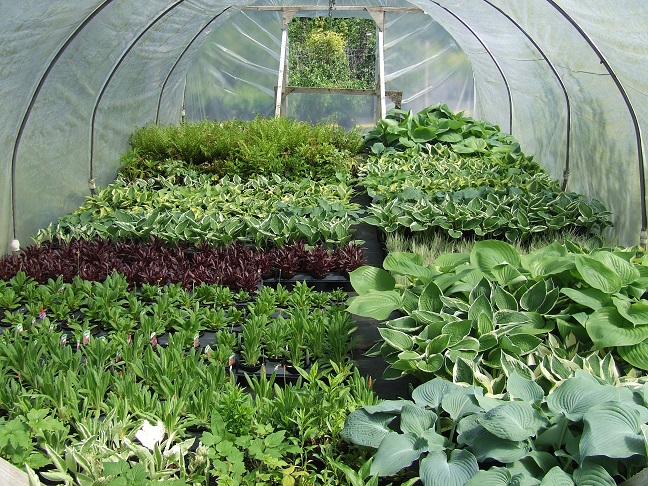Shady areas are often looked upon as difficult to plant. Low light levels and possibly poor soil conditions can mean that gardens are dull and lifeless and plants struggle to establish.

The most important aspect is to ensure you are using plants that will flourish in the conditions you have. There is a lot of variety, so there will be something that will catch your eye.
Moist shade is often found where the water table is high or under trees where the soil is rich in organic matter, such as the forest floor.
Before planting, remove all weeds from the area, work in some soil improver or compost, and add a fertiliser such as ‘Fish, Blood & Bone’ to the soil. Make sure the hole you dig is larger than the plant, fork over the bottom and the sides of the hole. After planting, apply a mulch such as bark chips over the soil to retain the water and suppress the weeds.
Newly set plants will need to be watered as necessary to help them establish. Once they are established, the right plant in the right the spot will eventually be able to fend for itself.
For variety, try to combine shrubs, plants grown for their foliage, flowering perennials and bulbs to give as much interest as possible.
Plants which work well in moist soil and shady conditions:
Evergreen
- Akebia (Climber)
- Ferns (some)
- Hydrangea Petiolaris (Climber)
- Passiflora - Passion flower (Semi Evergreen)
- Pittosporum eugeniodes
- Prunus – Laurel
- Rhododendrons
- Schizophragma (Climber)
- Skimmia Japonica
- Trachelospermum Jasminoides (Climber)
Perennials
- Ajuga
- Alchemilla Mollis
- All Ferns
- All Hostas
- Anemone
- Aquilegia
- Astilbe
- Astrantia major
- Bergenia
- Dicentra
- Spectabilis
- Helleborus
- Heuchera
- Ligularia
- Lysimachia
- Physostegia Virginian
- Polygonatum
- Primulas
- Rodgersia
- Tiarrella
- Tradescantia
- Trollius
- Viola
- Zantesdechia
Bulbs
- Camassia
- Cyclamen
- Gallanthus - Snowdrops
- Leucojum
- Narcissus – Daffodils
- Scilla – Bluebells
